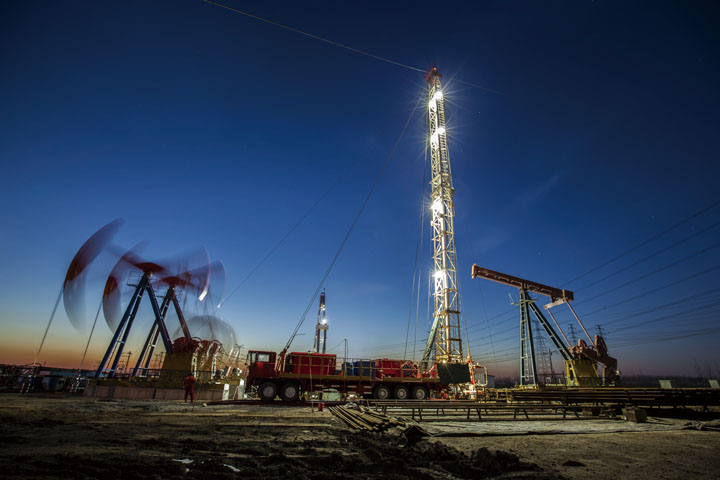
Sonatrach is a State-Owned Enterprise (SOE) that is dominant in the Algerian energy sector. It is the largest company in Africa and the 11th largest oil consortium in the world. In addition to oil exploration and production, Sonatrach is well known for fertilizer production and sales, construction and engineering, seawater desalination, air transportation, and shipping.
In 2017, with the help of its 120,000 employees and over 200 subsidiaries, Sonatrach generated more than USD 40 billion in revenue — over 95 percent of Algeria’s foreign exchange. The company’s goal is to become one of the five largest National Oil Companies (NOCs) in the world by 2030. This will require Sonatrach to strengthen its production, create upstream and downstream value chains, and develop new energy solutions. It also necessitates the digital transformation of Sonatrach’s business and enterprise operations.
Legacy IT Systems Cannot Support Business Growth
As the global demand for oil continues to decline, and as nations impose new environmental protections, the world’s energy markets are gradually shifting toward clean energy. This shift is driving the oil industry to promote clean energy production and development. Such a transformation depends on efficient Information Technology (IT) systems with robust data management and analysis capabilities.
Sonatrach is committed to climate protection and new energy development. In the face of inevitable industry-wide structural changes, Sonatrach knew that it had to adopt advanced IT technologies to further improve its production efficiency. The company’s legacy Information and Communications Technology (ICT) infrastructure supports various workloads but responds only to service requirements across the upstream, middle, and downstream phases of the oil and gas industry and the functional departments of each subsidiary. The legacy ICT system lacks unified planning, which leads to problems. For example:
- Resource silos:Sonatrach has five data centers that are discrete and operate independently of one another. Because of this, they lack unified management and scheduling. If one data center becomes overloaded, services cannot be distributed to other data centers. The physical machine + virtualization architecture creates a silo-like system that complicates the rollout of new services. Core services are deployed in a single data center and lack Disaster Recovery (DR) measures, which makes it difficult to ensure service continuity.
- Information silos:Sonatrach has more than 200 subsidiaries and more than 10 horizontal functional departments. However, the IT hardware is provided by different vendors, which can cause compatibility issues. Information has to be manually transferred through Excel spreadsheets or other electronic reports, limiting mobile access and resulting in data silos between departments and subsidiaries. Operating data from subsidiaries and departments cannot be extracted and compiled in a unified manner. This makes it difficult for the management team to monitor the data, leading to low operational efficiency.
By implementing new ICT technologies, Sonatrach hopes to boost its oil and gas production efficiency and increase revenue. The company’s digital transformation has already helped motivate management to improve its operational efficiency. Going forward, Sonatrach wants to promote a corporate culture of technical innovation, using its digital transformation to provide strong organizational support for future development.

Sonatrach’s Three-Phase Digital Transformation Strategy
Digital transformation is a process of continuous evolution. After studying Sonatrach’s approach to ICT and the company’s future business development requirements, Huawei proposed a three-phase digital transformation strategy:
- The HUAWEI CLOUD Stack (HCS) — the first enterprise-grade, full-stack hybrid cloud solution — is introduced. Existing IT resources are integrated, which eliminates resource silos. This approach achieves unified resource management and on-demand resource provisioning for multiple data centers, and it enables a quick service rollout.
- The SAP Enterprise Resource Planning (ERP) system is deployed on the cloud platform. This facilitates unified management of group-level resources and business modules, including finance, HR, asset management, budget management, and logistics. The system promotes comprehensive collaboration and data sharing between upstream and downstream business, which greatly improves the daily work efficiency of management personnel at all levels, and it enhances the effectiveness of the group’s operation management.
- Innovative service platforms and big data servicesare implemented. These services can be rapidly developed and tested. Data-value mining helps lay a foundation for the evolution of digitally-enhanced oil fields.
Phase 1 is currently under way. Once it is completed, Huawei and Sonatrach will continue to the second and third phases. Let’s take a look at some features that distinguish each of the phases in greater detail.
- The HSC uses a ‘One Cloud, One Lake, and One Platform’ architecture to help customers across various industries accelerate the migration of their business to the cloud.
- Intensive construction enables unified delivery, management, and provisioning of infrastructure.
- Technology stacking based on software and hardware collaboration provides high-performance cloud service capabilities. The HCS full-stack hybrid cloud provides the largest number of Infrastructure-as-a-Service (IaaS) offerings, with more than 60 cloud services.
- This solution takes advantage of innovative technologies, such as bare-metal-as-a-service, Graphics Processing Unit (GPU) enhancement, and SAP HANA cloud-host services, to move core enterprise applications to the cloud.
- The HCS is the only solution in the world that supports a wide variety of tenant-level DR services, such as local, intra-city, and cross-region DR, Cloud Server High Availability (CSHA) service, and cross-cloud backup, to ensure service continuity.
- A range of deployment specifications are able to meet differentiated high-performance requirements. SAP databases and applications can be deployed on Elastic Cloud Servers (ECSs) and Bare Metal Servers (BMSs). With these two deployment modes, Huawei offers more than 10 options for memory specifications — from 128 GB to 16 TB — that meet the varying requirements of different customers adopting the SAP service system.
- Self-service, self-Operations and Maintenance (self-O&M), and complete SAP lifecycle management: Based on the shared and elastic infrastructure resources of the cloud platform, users can apply for, allocate, and complete self-service operations on demand, without assistance from system administrators. Because the service rollout time is shortened from several weeks to mere hours, it can quickly meet customers’ SAP-environment requirements.
- High Availability (HA) solution: If the active SAP node is faulty, the HA feature automatically starts a new standby node. The SAP HA solution and the active-active storage solution provide dual support for SAP services, ensuring continuous and reliable service performance.
- Big Data Applications and an Innovative Service Platform
- Based on the HCS full-stack hybrid cloud, Huawei provides the full-lifecycle processing capability of ‘collection, storage, computing, management, and use’ to help enterprises transform data resources into data assets.
- Huawei integrates basic data services, general middleware, and industry middleware using the HCS. This enables developers to quickly innovate services based on multiple types of middleware.
- Hybrid orchestration of containers and Virtual Machines (VMs) allows complex services to be automatically provisioned.
To resolve Sonatrach’s concerns about deploying and maintaining an SAP HANA system, Huawei enlisted the services of an industry-leading ICT construction company, CNPC RICHFIT. The construction company previously helped China National Petroleum Corporation (CNPC) build the world’s largest SAP HANA cluster, so it had extensive experience in ERP system planning, design, integration, and implementation. With the combined strengths of Huawei and CNPC RICHFIT, Sonatrach is confident in its SAP system deployment solution on HUAWEI CLOUD.
At Huawei Connect 2018, the Sonatrach project won the ‘Best Digital Enterprise Transformation of the Year’ award. This award recognizes the project as a sterling example of future-proof digital transformation. Huawei will continue to invest in SAP innovations and work with partners to launch more high-performance solutions for customers.

